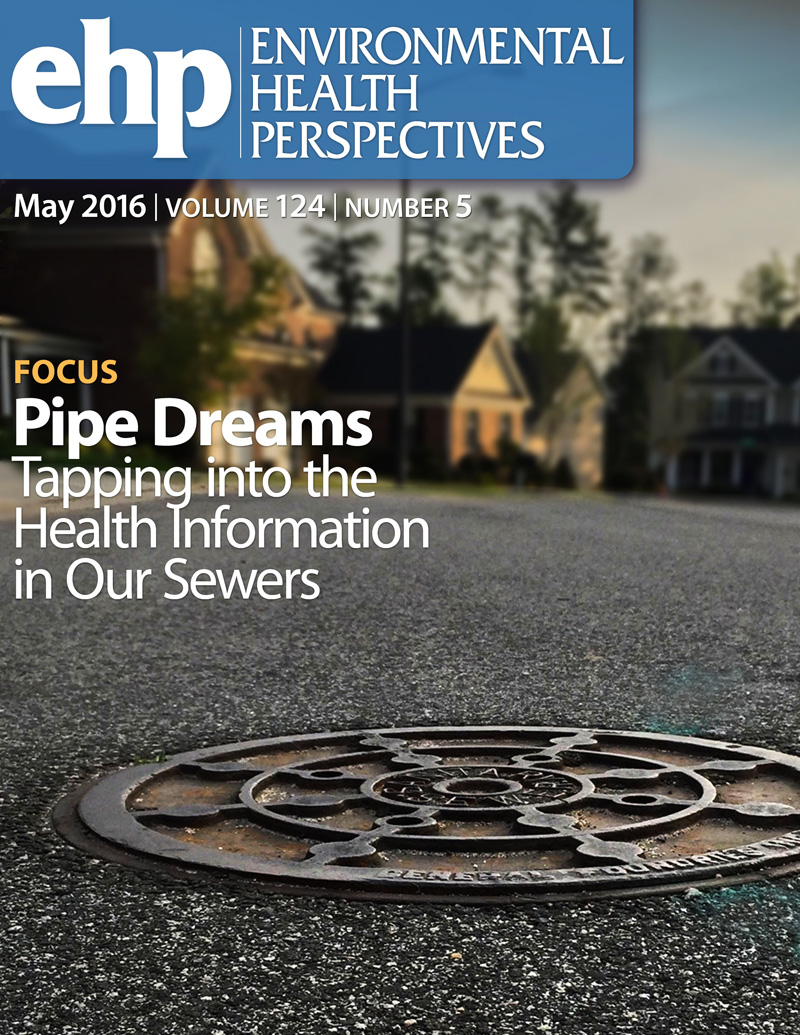IVF期间全氟辛酸相关的胚胎质量差与人卵泡液代谢物改变之间的关系:一项队列研究
IF 9.8
1区 环境科学与生态学
Q1 ENVIRONMENTAL SCIENCES
引用次数: 0
摘要
背景全氟烷基和多氟烷基物质(PFAS)已被证明会破坏正常的卵泡发育和排卵。然而,目前尚不清楚卵泡液中哪种特定的PFAS会对卵母细胞发育和胚胎质量产生负面影响,也不清楚卵泡液中是否存在任何代谢物会导致这些不利影响。目的:我们进行了一项横断面和队列研究,以确定对胚胎质量有显著不利影响的特异性PFAS及其相关的作用方式。方法378名接受辅助生殖技术(ART)治疗的妇女在取卵过程中采集卵泡液样本。我们对卵泡液进行了PFAS检测和非靶向代谢组学。分别使用beta回归和logistic回归评估单个PFAS与高质量胚胎率和临床妊娠结局的关联,并使用贝叶斯核机回归(BKMR)和分位数g计算模型评估PFAS混合的潜在联合效应。通过一个因果中介效应模型来估计PFAS(由高质量胚胎率介导)对临床妊娠结局的平均间接影响,以及代表所有其他因果效应的直接影响。采用Spearman等级相关系数来确定差异表达的代谢物与高质量胚胎率之间的关系。结果15种PFAS的检出率均超过85%,其中全氟辛酸(PFOA)的中位浓度最高,为6.54 ng/mL;混合PFAS与高质量胚率呈负相关,PFOA是主要影响因素(条件后验包含概率= 0.97295)。PFAS与临床妊娠结局也呈负相关,因果中介分析显示,胚胎质量可能介导了PFOA(比例介导:0.181,95% CI: 0.024, 0.755)、全氟壬烷酸(PFNA,比例介导:0.148,95% CI: 0.022, 0.656)或全氟壬烷酸(PFTrDA,比例介导:0.130,95% CI: 0.005, 0.693)与临床妊娠结局的关系。卵泡液中有机氮(原色氨酸和十二烷基二甲胺氧化物)和鞘脂代谢产物(植鞘氨酸、n -肉豆浆鞘氨酸和n -月桂酰-d-红鞘氨酸)的减少与PFOA相关的胚胎质量差有关。结论人工授精过程中卵泡液PFAS的高暴露与胚胎质量呈负相关,其中PFOA可能是主要影响因素。pfoa相关的胚胎质量差与有机氮和鞘脂代谢物的减少有关,而有机氮和鞘脂代谢物对维持正常细胞生长和代谢至关重要。https://doi.org/10.1289/EHP15422。本文章由计算机程序翻译,如有差异,请以英文原文为准。
Association between perfluorooctanoic acid-related poor embryo quality and metabolite alterations in human follicular fluid during IVF:A Cohort Study.
BACKGROUND
Perfluoroalkyl and polyfluoroalkyl substances (PFAS) have been shown to disrupt normal follicular development and ovulation. However, it is unknown which specific PFAS in follicular fluid negatively impact oocyte development and embryo quality or whether any of the metabolites present in the follicular fluid contribute to these adverse effects.
OBJECTIVES
We conducted a cross-sectional and cohort study to identify specific PFAS with significant adverse effects on embryo quality and their associated modes of action.
METHODS
We enrolled 378 women undergoing assisted reproductive technology (ART) and collected follicular fluid samples during oocyte retrieval. We performed PFAS detection and untargeted metabolomics on the follicular fluid. The association of individual PFAS with high-quality embryo rates and clinical pregnancy outcomes were assessed using beta regression and logistic regression, respectively, and potential joint effect of mixtures of PFAS using Bayesian kernel machine regression (BKMR) and Quantile g-computation models. A causal mediation effect model was performed to estimate the average indirect impact of PFAS, mediated by high-quality embryo rates, on the clinical pregnancy outcomes, as well as its direct impact representing all other causal effects. Spearman's rank correlation coefficient was used to identify the associations between the differentially expressed metabolites and the high-quality embryo rates.
RESULTS
The detection frequencies of 15 PFAS exceeded 85%, and perfluorooctanoic acid (PFOA) had the highest median concentration (6.54 ng/mL). The PFAS mixture was negatively associated with the high-quality embryo rate, and PFOA was the major contributor (conditional posterior inclusion probability = 0.97295). PFAS was also negatively associated with the clinical pregnancy outcome, and the causal mediation analysis revealed that the embryo quality potentially mediated the relationship between the clinical pregnancy outcome with PFOA (proportion mediated: 0.181, 95% CI: 0.024, 0.755), Perfluoro-n-nonanoic acid (PFNA, proportion mediated: 0.148, 95% CI: 0.022, 0.656), or Perfluoro-n-tridecanoic acid (PFTrDA, proportion mediated: 0.130, 95% CI: 0.005, 0.693). The decreased organonitrogens (Pro-Trp and lauryldimethylamine oxide) and sphingolipids metabolites (phytosphingosine, N-myristoylsphinganine and N-lauroyl-d-erythro-sphinganine) in the follicular fluid were associated with PFOA related-poor embryo quality.
CONCLUSIONS
High exposure to follicular fluid PFAS was negatively correlated with embryo quality during ART, with PFOA likely to be the major contributor. PFOA-related poor embryo quality was associated with the reduction of organonitrogens and sphingolipids metabolites that are crucial for the maintenance of normal cell growth and metabolism. https://doi.org/10.1289/EHP15422.
求助全文
通过发布文献求助,成功后即可免费获取论文全文。
去求助
来源期刊

Environmental Health Perspectives
环境科学-公共卫生、环境卫生与职业卫生
CiteScore
14.40
自引率
2.90%
发文量
388
审稿时长
6 months
期刊介绍:
Environmental Health Perspectives (EHP) is a monthly peer-reviewed journal supported by the National Institute of Environmental Health Sciences, part of the National Institutes of Health under the U.S. Department of Health and Human Services. Its mission is to facilitate discussions on the connections between the environment and human health by publishing top-notch research and news. EHP ranks third in Public, Environmental, and Occupational Health, fourth in Toxicology, and fifth in Environmental Sciences.
 求助内容:
求助内容: 应助结果提醒方式:
应助结果提醒方式:


